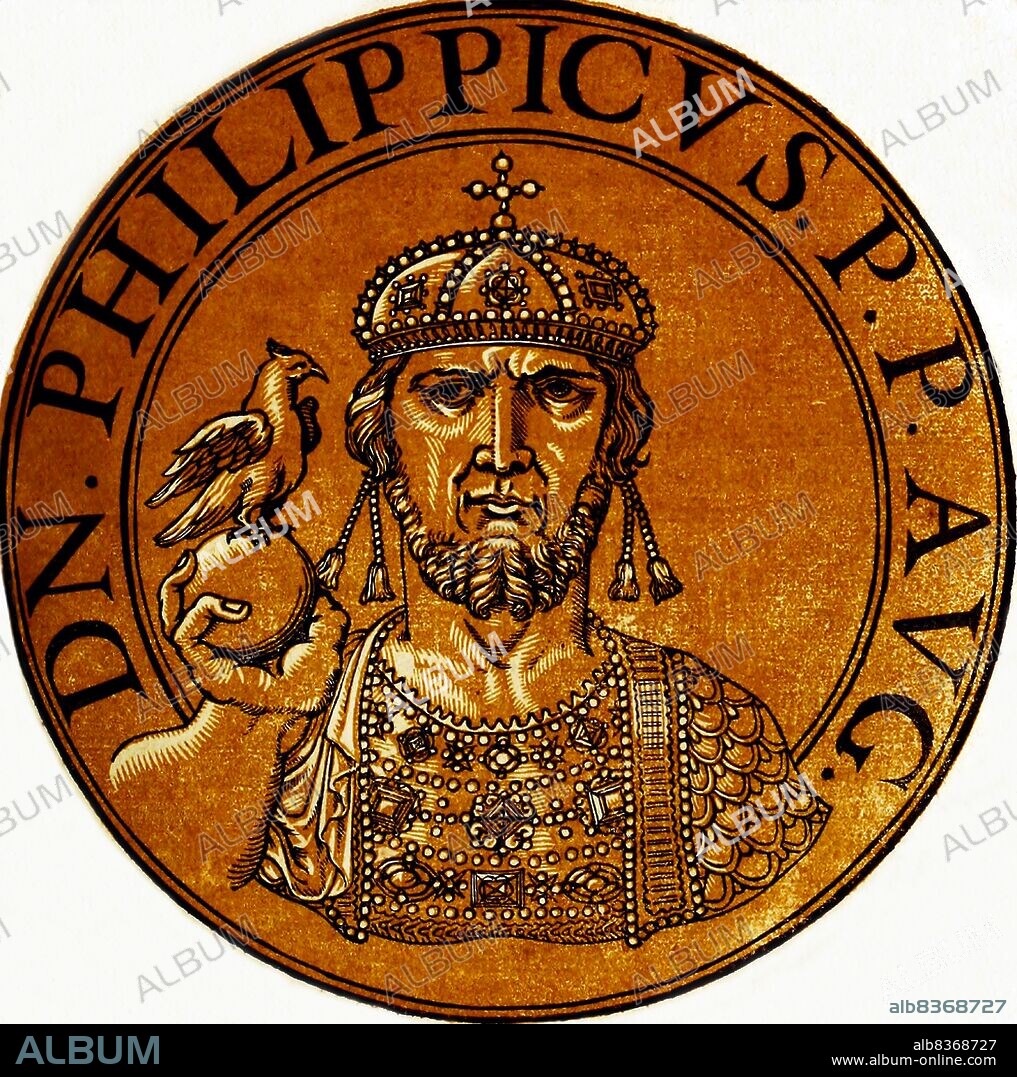alb8368727
Turkey / Byzantium: Icon of Philippicus (-713), Byzantine emperor, from the book Icones imperatorvm romanorvm< / i> (Icons of Roman Emperors), Antwerp,1645

|
Ajouter à une autre Lightbox |
|
Ajouter à une autre Lightbox |



Avez-vous déjà un compte? S'identifier
Vous n'avez pas de compte ? S'inscrire
Acheter cette image.
Sélectionnez l'usage:

Titre:
Turkey / Byzantium: Icon of Philippicus (-713), Byzantine emperor, from the book Icones imperatorvm romanorvm< / i> (Icons of Roman Emperors), Antwerp,1645
Légende:
Voir la traduction automatique
Philippicus (-713), also known as Philippikos Bardanes, was the son of an Armenian patrician in the Byzantine Empire. Not much is known of Philippicus' early years, but he soon had aspirations for the imperial throne, relying heavily on the support of the Monothelite party. However, his attempts during the first great rebellion against Emperor Justinian II failed with his relegation to Cephalonia by Tiberius, who took the throne for himself.
. Unhappy with his situation, Philippicus bided his time and began inciting the local inhabitants to revolt, aided by the Khazars. After Justinian II had returned to the throne, Philippicus finally struck and managed to seize Constantinople, leading to Justinian's later assassination as he attempted to rally support in the provinces.
. Philippicus immediately began his reign by changing the religious leaders of the empire to suit his sect, leading to the Roman Church refusing to recognise him. He also faced Bulgarian raids and Arabian attacks, ultimately resulting in a rebellion in Thrace which saw several officers enter the capital city and blind Philippicus in 713. He died later in the same year, succeeded by his prinicipal secretary Artemius, who took the name Anastasius II.
. Unhappy with his situation, Philippicus bided his time and began inciting the local inhabitants to revolt, aided by the Khazars. After Justinian II had returned to the throne, Philippicus finally struck and managed to seize Constantinople, leading to Justinian's later assassination as he attempted to rally support in the provinces.
. Philippicus immediately began his reign by changing the religious leaders of the empire to suit his sect, leading to the Roman Church refusing to recognise him. He also faced Bulgarian raids and Arabian attacks, ultimately resulting in a rebellion in Thrace which saw several officers enter the capital city and blind Philippicus in 713. He died later in the same year, succeeded by his prinicipal secretary Artemius, who took the name Anastasius II.
Crédit:
Album / Universal Images Group / Pictures From History
Autorisations:
Modèle: Non - Propriété: Non
Questions sur les droits?
Questions sur les droits?
Taille de l'image:
4642 x 4672 px | 62.0 MB
Taille d'impression:
39.3 x 39.6 cm | 15.5 x 15.6 in (300 dpi)
Mots clés:
8E SIECLE • 8EME S • ART (CATÉGORIE) • ART ROMAIN • ART • ART, ICONE • BYZANTIN • BYZANTINE • CESAR • DESSIN • DESSINER • ECRITURE LIVRES • EMPEREUR ROMAIN, CESAR • EMPEREUR • EMPEREURS • EMPEREURS, ROMAINS • EMPIRE BYZANTIN • EMPIRE ROMAIN • EPOQUE ROMAINE • ICÔNE (ORTHODOXIE) • ICONE • ICÙNE • ILLUSTRATION • IN-FOLIO • LIVRE (OUVRAGE) • LIVRE • LIVRES • MONARCHIE • MOTIF • PEINTURE ICONE • PERIODE: ROME IMPERIALE • ROMAIN • ROME, IMPERIALE • SOUVERAIN EMPEREUR • TECHNIQUE: DESSIN • TITRE, EMPEREUR • TURC • TURCS • TURQUE • TURQUIE
 Pinterest
Pinterest Twitter
Twitter Facebook
Facebook Copier le lien
Copier le lien Email
Email
